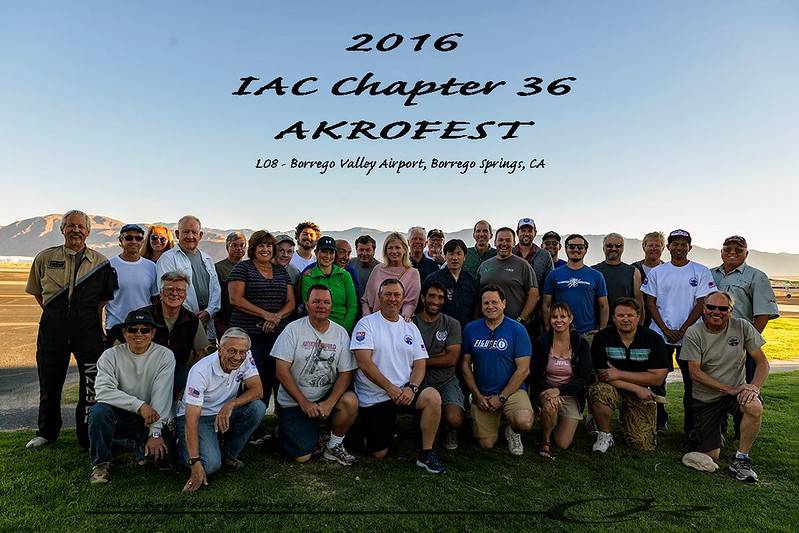In order to understand the genesis of the IAC, we need to go back to the earliest days of aviation. In 1905 the oldest aviation organization in America was formed, the Aero Club of America. It was in existence before the Wright flyer, and encouraged balloon flight records! It was a spin off of the Automobile Club of America. It was responsible for some of the most prestigious awards in aviation, such as the Collier Trophy, and validated the Wright brothers’ flights.
It joined seven other aero clubs in Europe to form the Federation Aeronautique Internationale, or FAI, which is the world’s governing organization for air sports activities. In 1922, The Aero Club of America was renamed the National Aeronautic Association, or NAA, a prestigious organization which exists to this day. Before the Civil Aeronautics Act of 1926, the NAA issued all pilot certificates. In recent years, its mission has been the advancement of the sport and science of aviation.
In 1965 the Experimental Aircraft Association (EAA) established the “Precision Flying Division” to develop rules for the sport of aerobatics. Three years later in 1968, Charlie Hillard and other air show performers started an organization, the Aerobatic Club of America or ACA, not to be confused with the original Aero Club of America, in order to sanction and regulate aerobatic contests in the United States. It was a division of the NAA, directly linked to the FAI, and took over jurisdiction of the Precision Flying Division of the EAA.
The vision of the EAA, on the other hand, was to create a grass roots aerobatic organization for the benefit of its members, rather than top competitors and air show performers. This set the stage for internal squabbles within the EAA.
Under the leadership of Bob Heuer, EAA members and aerobatic pilots in the greater Chicago area created the IAC in 1970 in order to counter the ACA. They conceived the idea of a building block approach in order for pilots to develop skills and improve their proficiency in aerobatics and competition.
This resulted in the system of categories as we now know them: basic (now called primary), sportsman, intermediate, advanced, and unlimited. He and other early members promoted the idea of local chapters, modeled after homebuilder chapters of the EAA, and organized contests across North America. From the outset, the goal of the IAC has been to promote safety, sportsmanship, and fair play.
In the same year, 1970, the IAC organized its first national competition in Fond du Lac, Wisconsin, called the IAC Championships, near the current headquarters of the EAA at Oshkosh. Contests were held in Fond du Lac until 1999, and finally in Chandler, Arizona in 2000. The IAC Championships were discontinued in 2001.
The ACA also sanctioned contests in the United States. It organized and held the first official National Aerobatic Championships in Phoenix, AZ in 1962, which was won by Duane Cole. Other notable winners of past ACA sanctioned Nationals included Art Scholl, Gene Soucy, and Leo Loudenslager. The National Championships have been held in Sherman, Texas, since 1972, and the contest was renamed the US National Aerobatic Championships in 2002.
So the ACA and the IAC competed with each other and held separate contests to crown the US aerobatic champion. They also competed for sole jurisdiction and sanctioning power over all aerobatic contests. Dissent in the aerobatic community occurred, and the NAA, as representatives for the FAI, stepped in to adjudicate dissent between the IAC and the ACA.
Mike Heuer, who was Bob’s son and has been a fixture in the IAC since 1981 and was recently elected to the board of the IAC, convinced the NAA to grant full sanctioning power to the IAC for all aerobatic contests. In 1982 NAA terminated its letter of agreement with the ACA, after which the IAC took over the role of sanctioning contests. The IAC remains a division of the EAA, and actively participates in the FAI through the National Aeronautic Association.
The IAC has four officers, six regional directors, and other directors representing the EAA, NAA, Unlimited Aerobatics USA, and international affairs. The current president until her term expires in July 2009 is Vicki Cruse, who is the former national unlimited aerobatic champion.
The Southwest region, which includes California, Arizona, Nevada, Utah, and Hawaii, is represented by Robert Armstrong. The IAC sanctions approximately 40 regional contests a year.
Chapter 36 is one of the strongest chapters in the IAC and in the Southwest region. It draws members primarily from the greater Los Angeles and San Diego areas. It hosts two contests per year, judge certification programs, critique sessions and special programs. It formerly held contests in Ramona, California, and now has an excellent aerobatic practice and contest box in Borrego Springs, California.


